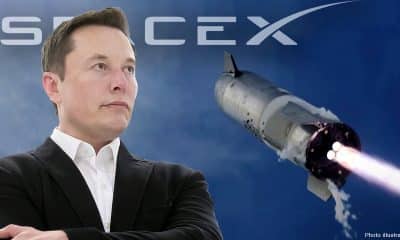Science
SpaceX Postpones Polaris Dawn Mission Due to Weather and Technical Issues

SpaceX has postponed its plan to launch an all-civilian expedition with the goal of performing the first spacewalk by private persons.
Polaris Dawn was slated to launch from NASA’s space centre in Florida early Wednesday morning.
Hours before the launch, Elon Musk’s business announced that it will be delayed “due to unfavourable weather forecasted” in the capsule’s splashdown zones.
It is uncertain when the next attempt will occur. An earlier one on Tuesday was also cancelled due to a helium leak in the pipe that connects the tower to the rocket.
Fin-tech billionaire Jared Isaacman, who created payment firm Shift 4, is the main force behind the private spaceflight.
He wants to be the first non-professional astronaut to complete a private spacewalk and has arranged and funded much of the endeavour with SpaceX. He has declined to say how much he has invested.
The Polaris project transports its crew in a SpaceX Dragon capsule tethered to the company’s Falcon 9 rocket.
They intend to reach altitudes as high as 1,400km (870 miles), which would be the highest point attained by a crewed mission since NASA’s Apollo programme more than 50 years ago.
The businessman is also the captain of the crew, which includes his personal friend and retired US Air Force pilot Scott Poteet, as well as two SpaceX engineers, Anna Menon and Sarah Gillis.
All four have spent two years preparing for the trip, logging thousands of hours in simulated drills.
Mr Isaacman has previously travelled to space, reportedly paying $200 million (£151 million) to participate in SpaceX’s first all-civilian orbital trip, the Inspiration4 mission, scheduled for 2021.
The Polaris Dawn mission is scheduled to last six days in space. The spacewalk is scheduled to take place on day three.
Mr Isaacman and Ms Gillis will subsequently escape the spacecraft while wearing Space X’s modified spacesuits, which have displays and helmet cameras. The entire event, which will take place 700 km in orbit, is expected to last almost two hours.
They are also prepared to conduct a number of tests from high altitude, including communication with Starlink internet satellites and investigations of the effects of travelling through the Van Allen radiation belt, a highly charged area of space.










































